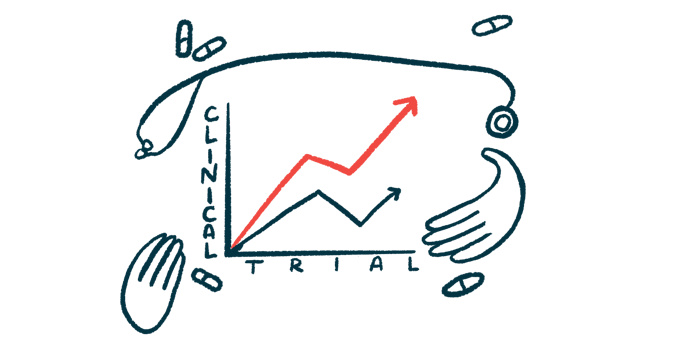Design for 2nd part of Rett gene therapy TSHA-102 trial set
FDA agrees to design following positive results from REVEAL 1st part

The U.S. Food and Drug Administration (FDA) agreed to Taysha Gene Therapies’ proposed design for the second part of a clinical trial testing TSHA-102, the company’s gene therapy for Rett syndrome, that’s expected to start this year.
The study design is based on results from Part A of the REVEAL Phase 1/2 trial (NCT05606614) for adolescents and adult women and another trial, also called REVEAL (NCT06152237), conducted in pediatric patients (NCT06152237), that began dosing girls, ages 5 to 8, earlier this year.
Analysis of the Rett Syndrome Natural History Study dataset also helped guide the design. The FDA indicated its alignment with the planned study in writing, Taysha said.
“We believe aligning with the FDA on key elements of our proposed pivotal trial design validates these important findings that underpin our pivotal trial design and strengthen our conviction in the transformative potential of TSHA-102,” Sean P. Nolan, Taysha’s CEO, said in a company press release. “Importantly, this progress sets us on an efficient and expeditious path to potentially deliver TSHA-102 to patients and families suffering from this devastating disease with high unmet need.”
Rett Syndrome is a rare, genetic disorder that affects cognitive, sensory, emotional, and motor skills. Normal development in infants or toddlers with Rett starts to slow, stagnate or regress, typically between the ages of 6-18 months.
Rett gene therapy trials
Rett syndrome is caused in most cases by mutations in the MECP2 gene, which produces the MeCP2 protein. Resulting low levels of MeCP2 can disrupt normal brain development, although high levels can also be disruptive.
TSHA-102 is designed to give brain cells a functional copy of the MECP2 gene. After injection into the spinal canal (intrathecal injection), a genetically engineered viral vector delivers the packaged genetic material. This is shorter than the typical MECP2 gene, but is intended to allow the cells to produce enough MeCP2 to function without being harmful.
In Part A of the REVEAL trials, 10 patients, ages 6 to 21, received a high or low dose of TSHA-102. All participants achieved at least one developmental milestone, gaining or regaining a lost function after treatment. Such milestones included fine motor, gross motor, and communication functions. The six patients in the higher-dosage group reached this 100% response rate 25% earlier than those in the low-dose group.
The therapy was generally safe and well tolerated, with all side effects rated as mild or moderate.
To design the Part B portion of the study, Taysha looked to data from the Rett Syndrome Natural History Study, which has collected information from about 1,100 females with Rett. With 14 years of follow-up, this dataset is the largest of its kind.
“Our rigorous analysis of the robust natural history study dataset demonstrated that after six years of age, the likelihood of achieving defined developmental milestones across the core functional domains of Rett syndrome is highly improbable,” Nolan said.
All REVEAL Part A participants had reached this developmental plateau before treatment. This means their progress following treatment with TSHA-102 was “quite striking,” according to Nolan.
Knowing about the developmental plateau may indeed help researchers test the effects of experimental treatments for Rett, according to Jeffrey Neul, MD, PhD, who was the administrative head of the natural history study.
“These data allow us to objectively measure how transformative therapies impact functional aspects of the disease that are essential to activities of daily living,” Neul said.
Taysha will continue to use reaching or regaining developmental milestones at age 6 or later to define participants’ responses in Part B. In this portion of the trial, approximately 15 participants will receive the therapy, with each patient serving as their own control.
The company will define a response to the therapy as gaining or regaining at least one developmental milestone. Researchers will perform interim analysis after six months and final analysis after a year.
“We believe this objective and clinically meaningful primary endpoint has the potential to redefine treatment expectations and expand the possibilities of gene therapy for patients with Rett syndrome,” Nolan said.
TSHA-102 safety will be assessed in girls who are in pre-developmental plateau, meaning ages 2-6.
On advice from the FDA, the company plans to submit support for its definition of responder, finalized Part B protocol, and statistical analysis plan (SAP) to the regulatory agency. This will be part of an amendment to their investigational new drug (IND) application for TSHA-102.
”We plan to submit the pivotal trial protocol and SAP as an amendment to the IND application this quarter and anticipate initiating this pivotal program in the third quarter of 2025,” Nolan said.







